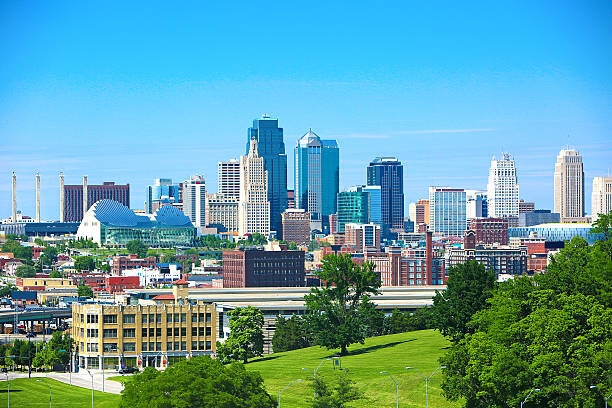Kansas City Northern Railroad in Kansas City, MO
When people think of railroads, they typically envision the iconic steam locomotives of the 1800s, bringing communities together through an expansive network of tracks, supplying materials and people to wherever they needed to go. One of these railroad lines is the Kansas City Northern Railroad (KCN), which is one of the oldest Class 1 railroad lines in the country. The railroad has a rich history in the state of Missouri, with its origins stretching back to the gold and silver rush days of the mid-1800s and becoming a major symbol of progress in the state until the mid-1900s. Today, the KCN is just as important as it has ever been, connecting people and businesses all over the Greater Kansas City Metropolitan area and to Kansas and Iowa as well. Visit this link for more information.
The Kansas City Northern Railroad, or KCN, has roots in the Missouri territory, with some of its predecessor railroads being established as early as 1867. This was when the Hannibal and St. Joseph Railway Company were founded, and construction of the rail line commenced almost immediately. The H&StJ was the first railroad to break the record of being the longest, continuous rail line in the world and held the title until the Union Pacific Railroad (UPA) broke it in 1869. The construction of the rail line was a symbol of progress and over time, it began to intersect with several other developing railways in the area. Read about The Importance of Kansas City International Airport in Kansas City, MO here.

It was in this formation that the KCN Truly flourished, creating a network of transportation that covered much of the state, running from St. Joseph, MO, all the way to Elmo, KS, and from Omaha, NE, to Peoria, IL, with branches serving other parts of the Midwest as well. This enabled them to be one of the most influential railroads in the country and to carry shipments of all kinds throughout the mid-South and Midwest. By 1906, the KCN had become one of the largest railroad networks in the state, with 1,486 miles of track and 134 locomotives.
The KCN’s success was partly due to its modern facilities, which kept the rail lines competitive in terms of lack of downtime, reliability, and speed. This was very much in step with the advances in railway technology of the time and enabled them to maintain their competitive edge. This competitive edge was especially seen when the Union Pacific and the Missouri Pacific merged in 1915 to create the Missouri-Kansas-Texas (MKT) Line. The KCN held onto its own environment by competing directly with this consolidation by providing faster and more reliable lines, as well as buying up some of its competitors.
Today, the KCN is still a major player in the US rail system, with its track continuing to stretch all around the Greater Kansas City metropolitan area and beyond. It is owned and operated by Burlington Northern and Santa Fe Railway, a subsidiary of Berkshire Hathaway, an American multinational conglomerate. The KCN still plays an important role in connecting the communities of Kansas City with those of Iowa and Nebraska, as well as other corners of the Midwest. It has become known for its freight and commuter services, with its extensive network aiding in the transport of goods and passengers where needed. It also provides a vital link to its communities by providing jobs and boosting the local economy.

